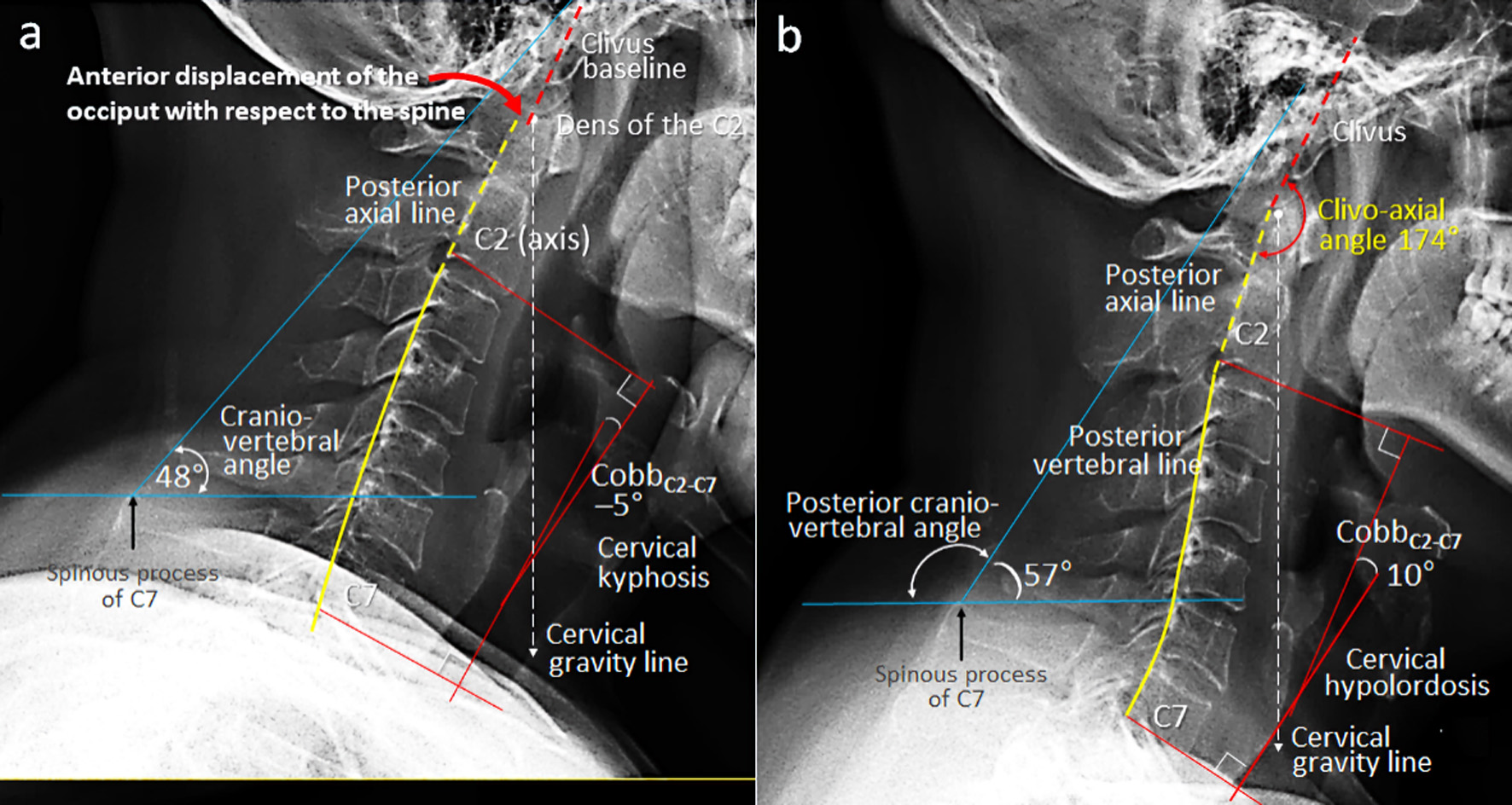
Figure 1. Comparison of cervical alignment on sagittal radiographs in neutral position. (a) At initial assessment, a lack of cervical lordosis, narrowing of the C2/3, C5/6 and C7/T1 intervertebral spaces, and dissociation of the clivo-axial angle (CXA) were noticed (curved red arrow). The fulcrum effect at the tip of the dens might predispose the brainstem to impingement during neck motions. (b) At 12-month follow-up, all radiographic metrics showed significant improvement, including correction of the dissociated CXA, cervical curvature and other postural parameters (global lordosis angle, craniovertebral angle, head inclination and shifting of the cervical gravity line). Restored CXA and cervical alignment yielded simultaneous remission of neurological symptoms.